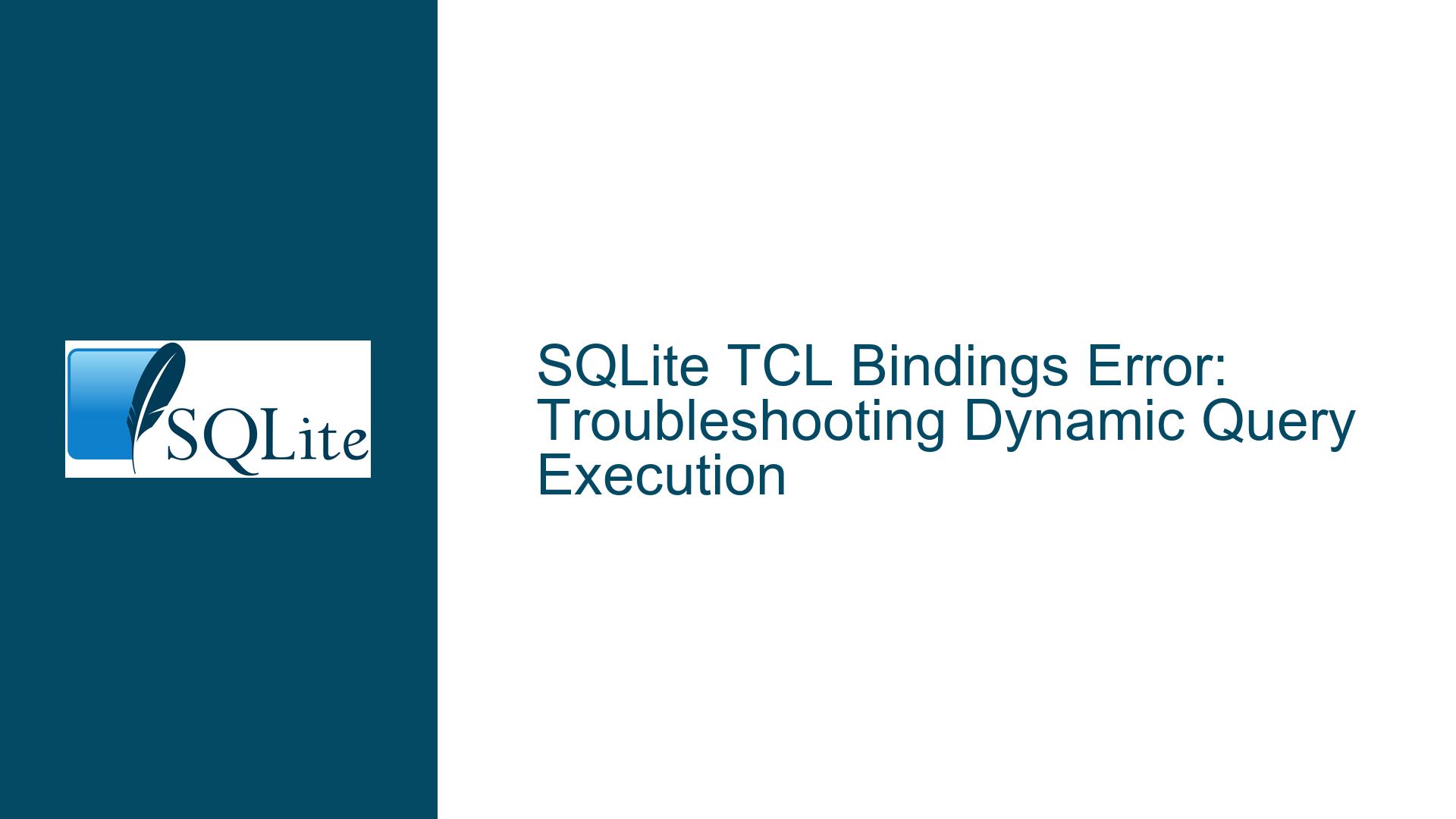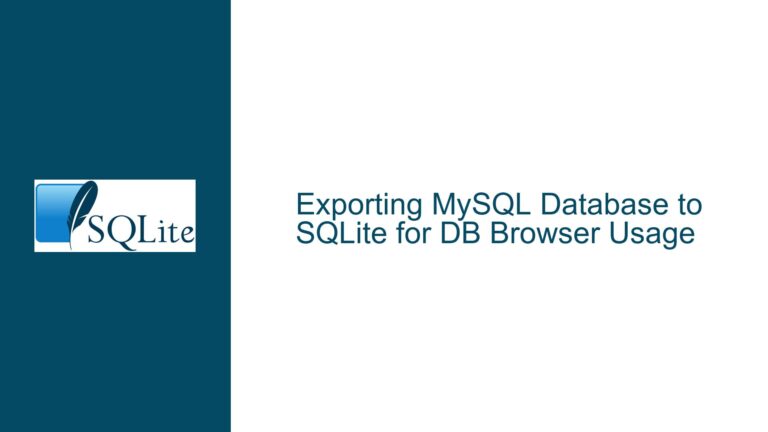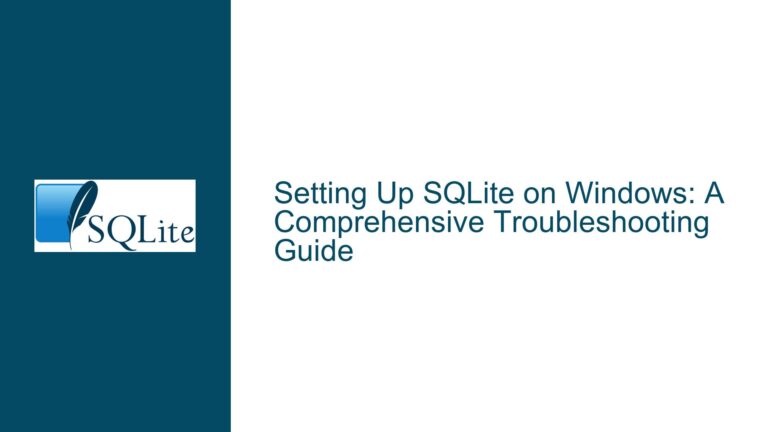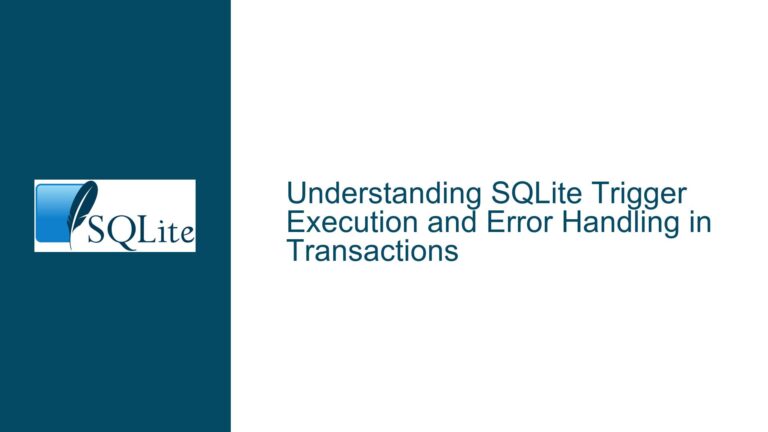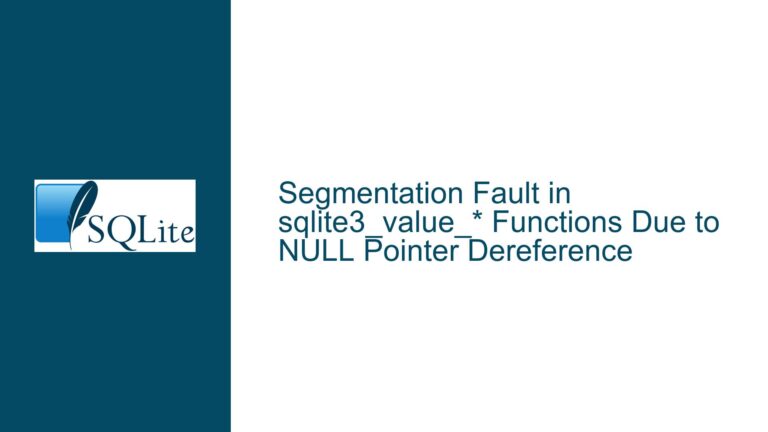SQLite TCL Bindings Error: Troubleshooting Dynamic Query Execution
SQLite3 Command Syntax Misunderstanding in TCL Script
The core issue revolves around a misunderstanding of the SQLite3 TCL bindings syntax, particularly when attempting to prepare and execute dynamic SQL queries. The error message indicates that the sqlite3 prepare command is not being used correctly, as the script is attempting to use it in a way that does not align with the documented SQLite3 TCL API. This results in the error:
"sqlite3 HANDLE ?FILENAME? ?-vfs VFSNAME? ?-readonly BOOLEAN? ?-create BOOLEAN? ?-nofollow BOOLEAN? ?-nomutex BOOLEAN? ?-fullmutex BOOLEAN? ?-uri BOOLEAN?"
This error suggests that the sqlite3 command is being misinterpreted as a database handle creation command rather than a query preparation command. The issue is compounded by the fact that the script is attempting to use a placeholder (?) in the SQL query without properly binding it to a value using the correct TCL API methods.
Additionally, the script is attempting to use a testing-specific function, sqlite3_test_control_pending_byte, which is not part of the standard SQLite TCL bindings. This function is only available in the SQLite source tree and is used exclusively for internal testing purposes. Its inclusion in the script indicates a misunderstanding of the available API functions and their intended use cases.
Incorrect SQLite3 TCL API Usage and Testing Function Misapplication
The primary cause of the issue is the incorrect usage of the SQLite3 TCL API, specifically the sqlite3 prepare command. The script attempts to use this command to prepare a SQL statement with a placeholder (?), but the syntax used does not match the documented API. The sqlite3 prepare command is not a valid command in the SQLite3 TCL bindings; instead, the correct approach is to use the db prepare method, where db is the database handle created using the sqlite3 command.
Another contributing factor is the inclusion of the sqlite3_test_control_pending_byte function, which is not part of the standard SQLite TCL bindings. This function is only available in the SQLite source tree and is used for internal testing. Its inclusion in the script suggests that the developer may have been working with the SQLite source code or testing framework, but this function is not applicable to standard SQLite TCL usage.
The script also fails to properly bind the placeholder (?) to a value before executing the query. The sqlite3 bind command is used incorrectly, as it does not exist in the SQLite3 TCL API. Instead, the correct approach is to use the stmt bind method, where stmt is the prepared statement handle.
Finally, the script does not properly handle the database connection and prepared statement lifecycle. The sqlite3 close command is used incorrectly, as it does not exist in the SQLite3 TCL API. Instead, the correct approach is to use the db close method to close the database connection.
Correcting SQLite3 TCL API Usage and Implementing Dynamic Query Execution
To resolve the issues, the script must be updated to correctly use the SQLite3 TCL API. The following steps outline the necessary changes:
Database Connection Initialization: The script must correctly initialize the database connection using the
sqlite3command. Thesqlite3command creates a database handle, which is used to interact with the database. The correct syntax is:sqlite3 db mydatabase.dbHere,
dbis the database handle, andmydatabase.dbis the database file.Preparing SQL Statements: The script must use the
db preparemethod to prepare SQL statements. The correct syntax is:set stmt [db prepare "SELECT id FROM customer WHERE id = ?"]Here,
stmtis the prepared statement handle, and?is the placeholder.Binding Values to Placeholders: The script must use the
stmt bindmethod to bind values to placeholders. The correct syntax is:$stmt bind 1 42Here,
1refers to the first placeholder, and42is the value to bind.Executing the Prepared Statement: The script must use the
stmt stepmethod to execute the prepared statement. The correct syntax is:set result [$stmt step]Here,
resultwill contain the result of the query execution.Retrieving Query Results: The script must use the
stmt columnmethod to retrieve the results of the query. The correct syntax is:if {[$stmt column 0] ne ""} { set customer_id [$stmt column 0] puts "Customer ID: $customer_id" } else { puts "No matching customer found." }Here,
column 0retrieves the value of the first column in the result set.Finalizing the Prepared Statement: The script must use the
stmt finalizemethod to finalize the prepared statement. The correct syntax is:$stmt finalizeThis releases the resources associated with the prepared statement.
Closing the Database Connection: The script must use the
db closemethod to close the database connection. The correct syntax is:db closeThis closes the database connection and releases associated resources.
Removing Testing-Specific Functions: The script must remove any references to testing-specific functions, such as
sqlite3_test_control_pending_byte, as these are not part of the standard SQLite TCL bindings.
By following these steps, the script can be corrected to properly use the SQLite3 TCL API and execute dynamic SQL queries. The updated script should look like this:
#!/opt/ActiveTcl-8.6/bin/wish8.6
# Append the necessary paths to auto_path
set auto_path [linsert $auto_path 0 /opt/ActiveTcl-8.6/lib/tcl8.6/sqlite3]
lappend auto_path /opt/ActiveState8.6/lib/tk8.6
lappend auto_path /opt/ActiveState8.6/lib/Tktable2.11
# Debugging: print the auto_path to verify the changes
puts "Updated auto_path: $auto_path"
# Load the SQLite3 package
package require sqlite3
# Open the SQLite database
if {[llength $argv] > 0} {
set db_file [lindex $argv 0]
} else {
set db_file "mydb.db"
}
# Open the database connection
sqlite3 db $db_file
# Prepare the SELECT statement with a placeholder (?)
set stmt [db prepare "SELECT id FROM customer WHERE id = ?"]
# Bind a value to the prepared statement
$stmt bind 1 42
# Execute the statement
set result [$stmt step]
# Retrieve the result (if any)
if {[$stmt column 0] ne ""} {
set customer_id [$stmt column 0]
puts "Customer ID: $customer_id"
} else {
puts "No matching customer found."
}
# Finalize the statement
$stmt finalize
# Close the database connection
db close
This corrected script properly initializes the database connection, prepares and executes a dynamic SQL query, and handles the database connection and prepared statement lifecycle correctly. It also removes any references to testing-specific functions, ensuring compatibility with the standard SQLite TCL bindings.
